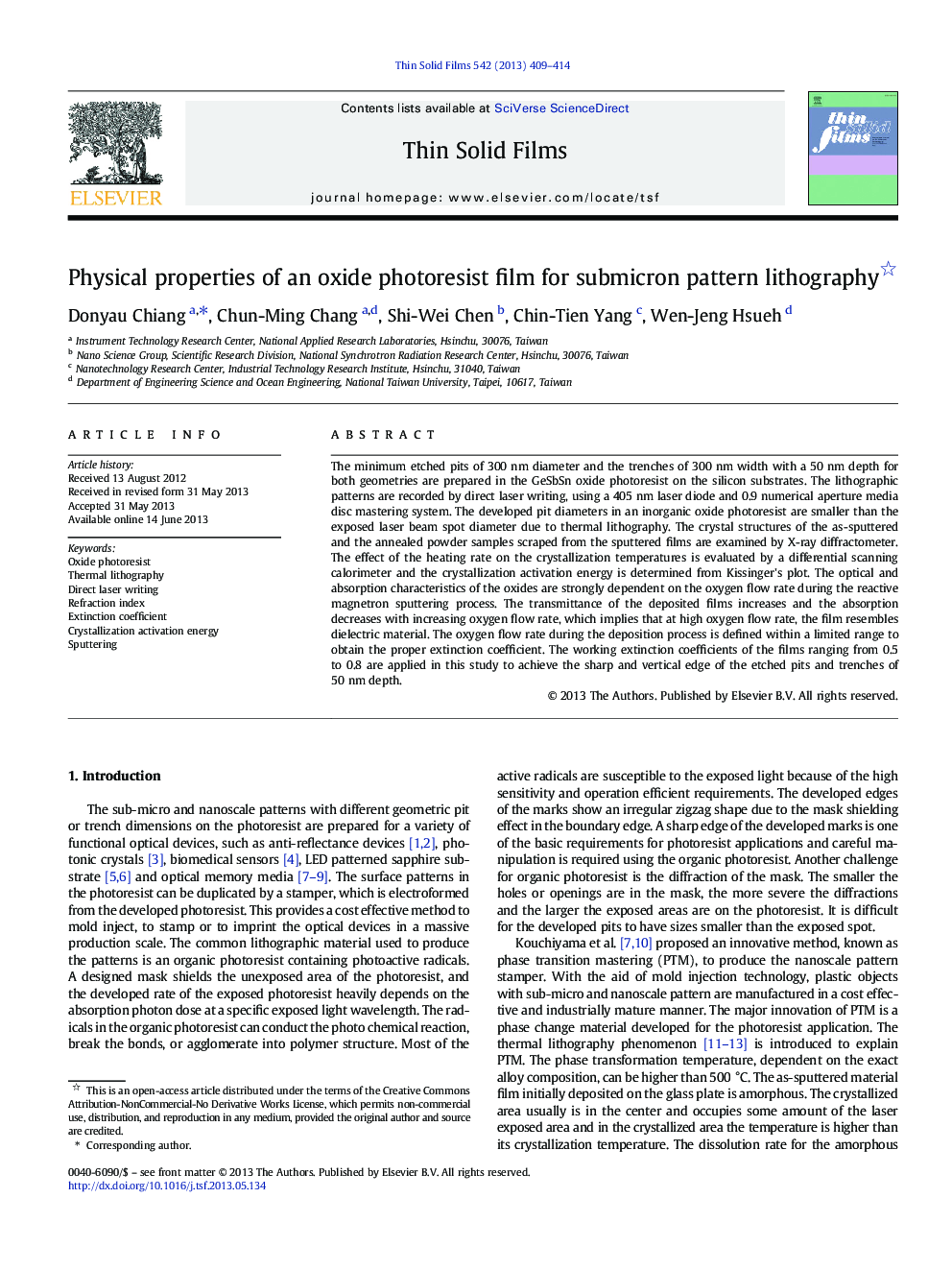| Article ID | Journal | Published Year | Pages | File Type |
|---|---|---|---|---|
| 8036511 | Thin Solid Films | 2013 | 6 Pages |
Abstract
The minimum etched pits of 300Â nm diameter and the trenches of 300Â nm width with a 50Â nm depth for both geometries are prepared in the GeSbSn oxide photoresist on the silicon substrates. The lithographic patterns are recorded by direct laser writing, using a 405Â nm laser diode and 0.9 numerical aperture media disc mastering system. The developed pit diameters in an inorganic oxide photoresist are smaller than the exposed laser beam spot diameter due to thermal lithography. The crystal structures of the as-sputtered and the annealed powder samples scraped from the sputtered films are examined by X-ray diffractometer. The effect of the heating rate on the crystallization temperatures is evaluated by a differential scanning calorimeter and the crystallization activation energy is determined from Kissinger's plot. The optical and absorption characteristics of the oxides are strongly dependent on the oxygen flow rate during the reactive magnetron sputtering process. The transmittance of the deposited films increases and the absorption decreases with increasing oxygen flow rate, which implies that at high oxygen flow rate, the film resembles dielectric material. The oxygen flow rate during the deposition process is defined within a limited range to obtain the proper extinction coefficient. The working extinction coefficients of the films ranging from 0.5 to 0.8 are applied in this study to achieve the sharp and vertical edge of the etched pits and trenches of 50Â nm depth.
Keywords
Related Topics
Physical Sciences and Engineering
Materials Science
Nanotechnology
Authors
Donyau Chiang, Chun-Ming Chang, Shi-Wei Chen, Chin-Tien Yang, Wen-Jeng Hsueh,
